Do Males Get UTIs? Understanding Urinary Tract Infections in Men
How common are urinary tract infections in men. What are the main causes of UTIs in males. How can men prevent and treat urinary tract infections. What are the symptoms of a male UTI. When should men see a doctor for urinary issues.
The Prevalence and Types of UTIs in Men
Urinary tract infections (UTIs) are generally less common in men compared to women, but they can still occur and cause significant discomfort. UTIs in men are typically categorized into two main types:
- Lower tract infections: These affect the bladder (cystitis) and urethra (urethritis)
- Upper tract infections: These involve the ureters and kidneys (pyelonephritis)
While UTIs are less frequent in younger men, the risk increases with age, particularly in men over 50. This is often due to changes in the prostate gland that can affect urinary flow and increase the likelihood of bacterial growth.
Risk Factors for Male Urinary Tract Infections
Several factors can increase a man’s risk of developing a UTI:

- Enlarged prostate (benign prostatic hyperplasia or BPH)
- Anal intercourse
- Uncircumcised penis
- Urethral strictures
- Catheter use
- Compromised immune system
Understanding these risk factors can help men take preventive measures and seek timely medical attention when necessary.
Recognizing the Symptoms of UTIs in Men
Identifying the symptoms of a UTI is crucial for early diagnosis and treatment. Common signs include:
- Frequent urination
- Urgent need to urinate
- Burning sensation during urination
- Pelvic discomfort
- Cloudy or foul-smelling urine
- Fever and chills
- Nausea and vomiting
- Back or side pain
Are these symptoms always indicative of a UTI? Not necessarily. While these signs are common in UTIs, they can also be associated with other urinary tract conditions. Therefore, it’s essential to consult a healthcare provider for an accurate diagnosis.
Diagnosing UTIs in Male Patients
Proper diagnosis of a UTI in men involves several steps:
- Medical history assessment
- Physical examination, including a rectal exam to check prostate size
- Urinalysis to detect white blood cells and bacteria
- Urine culture to identify the specific bacteria causing the infection
In some cases, especially for younger men or those with recurrent infections, additional tests may be necessary. These can include:

- Intravenous pyelography
- Computed tomography (CT) scan
- Ultrasound
- Cystoscopy
Why are these additional tests sometimes required? They help identify any underlying urinary tract abnormalities that might be contributing to the frequent occurrence of UTIs.
Treatment Options for Male Urinary Tract Infections
The primary treatment for UTIs in men is antibiotics. The choice of antibiotic and duration of treatment depend on several factors:
- The specific bacteria causing the infection
- The severity of symptoms
- Whether it’s a lower or upper tract infection
- The presence of any complications
How long does it take for UTI symptoms to improve with treatment? With proper antibiotic therapy, most uncomplicated UTIs begin to show improvement within one to two days. However, it’s crucial to complete the entire course of antibiotics as prescribed, even if symptoms subside earlier.
Managing UTI Symptoms at Home
In addition to antibiotics, there are several self-care measures that can help alleviate UTI symptoms:
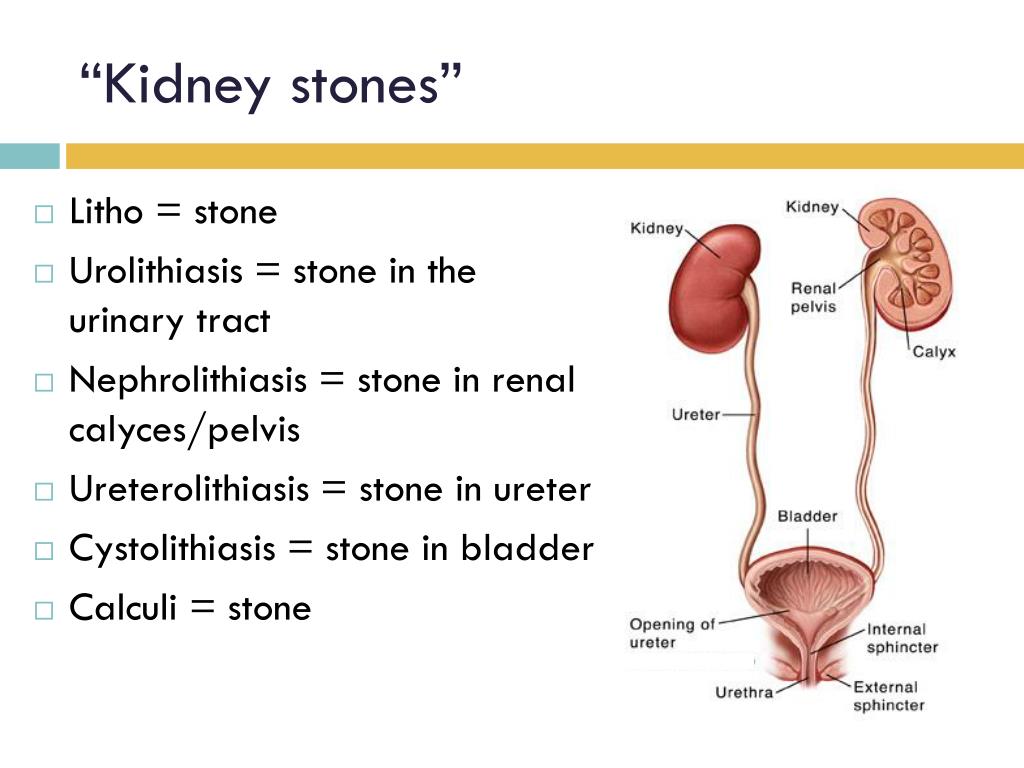
- Drinking plenty of water to flush out bacteria
- Using a heating pad to relieve pelvic discomfort
- Avoiding irritants like caffeine, alcohol, and spicy foods
- Taking over-the-counter pain relievers if recommended by a doctor
Preventing UTIs in Men: Strategies for Reducing Risk
While not all UTIs in men can be prevented, certain measures can help reduce the risk:
- Practicing good hygiene, especially after sexual activity
- Staying well-hydrated
- Urinating regularly and completely emptying the bladder
- Using condoms during sexual intercourse
- Managing underlying health conditions, such as diabetes or BPH
For men with benign prostatic hyperplasia, are there specific preventive measures? Yes, some strategies can help:
- Reducing caffeine and alcohol intake
- Taking prescribed medications to improve urine flow
- Regular prostate check-ups
Complications of Untreated UTIs in Men
Leaving a UTI untreated can lead to serious complications:
- Kidney infections (pyelonephritis)
- Sepsis, a life-threatening systemic infection
- Prostate inflammation (prostatitis)
- Urethral narrowing
- Abscess formation
How quickly can these complications develop? The progression of a UTI to more serious conditions can vary, but it’s generally advisable to seek medical attention if symptoms persist for more than a day or two, or if they worsen rapidly.

When to Seek Medical Attention for Urinary Symptoms
Men should consult a healthcare provider if they experience:
- Persistent urinary symptoms lasting more than a day
- Fever above 101°F (38.3°C)
- Back pain or flank pain
- Blood in the urine
- Difficulty urinating or inability to urinate
Is immediate medical attention necessary for all urinary symptoms? Not always, but it’s better to err on the side of caution, especially if symptoms are severe or accompanied by fever.
Importance of Follow-Up Care
After treatment for a UTI, follow-up care is crucial to ensure complete resolution of the infection and to prevent recurrence. This may involve:
- A repeat urinalysis to confirm the infection has cleared
- Discussion of preventive measures
- Evaluation for underlying urological conditions
The Role of Prostate Health in Male UTIs
The prostate gland plays a significant role in male urinary health. As men age, the prostate can enlarge, a condition known as benign prostatic hyperplasia (BPH). This enlargement can affect urinary flow and increase the risk of UTIs.
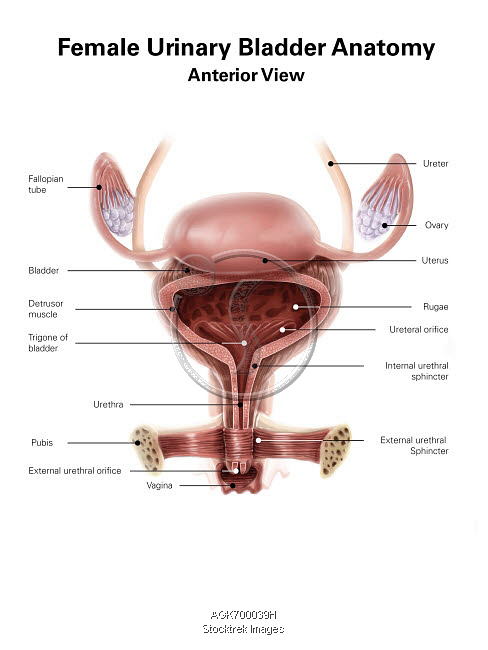
How does BPH contribute to UTI risk? An enlarged prostate can:
- Obstruct urine flow, leading to incomplete bladder emptying
- Create a favorable environment for bacterial growth
- Make it more difficult to flush out bacteria from the urinary tract
Regular prostate check-ups, especially for men over 50, can help detect and manage BPH early, potentially reducing the risk of UTIs.
Prostate-Specific UTI Considerations
In addition to typical UTIs, men can also experience prostatitis, an inflammation of the prostate that can cause UTI-like symptoms. Prostatitis can be:
- Acute bacterial prostatitis
- Chronic bacterial prostatitis
- Chronic prostatitis/chronic pelvic pain syndrome
Treatment for prostatitis may require longer courses of antibiotics and additional therapies compared to standard UTIs.
The Impact of Sexual Activity on Male UTIs
While less common than in women, sexual activity can still contribute to UTIs in men. Factors that increase risk include:
- Unprotected anal intercourse
- Multiple sexual partners
- Sexually transmitted infections (STIs)
How can men reduce UTI risk related to sexual activity? Practical steps include:

- Using condoms consistently
- Urinating before and after sexual activity
- Maintaining good genital hygiene
- Regular STI screenings
Recurrent UTIs in Men: Causes and Management
Some men may experience recurrent UTIs, defined as three or more infections within a year. Potential causes include:
- Underlying anatomical abnormalities
- Chronic prostatitis
- Incomplete bladder emptying
- Kidney or bladder stones
- Compromised immune system
Management of recurrent UTIs often involves:
- Thorough urological evaluation
- Imaging studies to detect anatomical issues
- Long-term, low-dose antibiotic prophylaxis in some cases
- Addressing underlying health conditions
Can lifestyle changes help prevent recurrent UTIs? Absolutely. Strategies such as increasing fluid intake, practicing good hygiene, and managing chronic health conditions can all contribute to reducing UTI recurrence.
Antibiotic Resistance and UTIs: A Growing Concern
The rise of antibiotic-resistant bacteria is a significant concern in the treatment of UTIs. This phenomenon occurs when bacteria evolve to withstand the effects of antibiotics, making infections harder to treat.
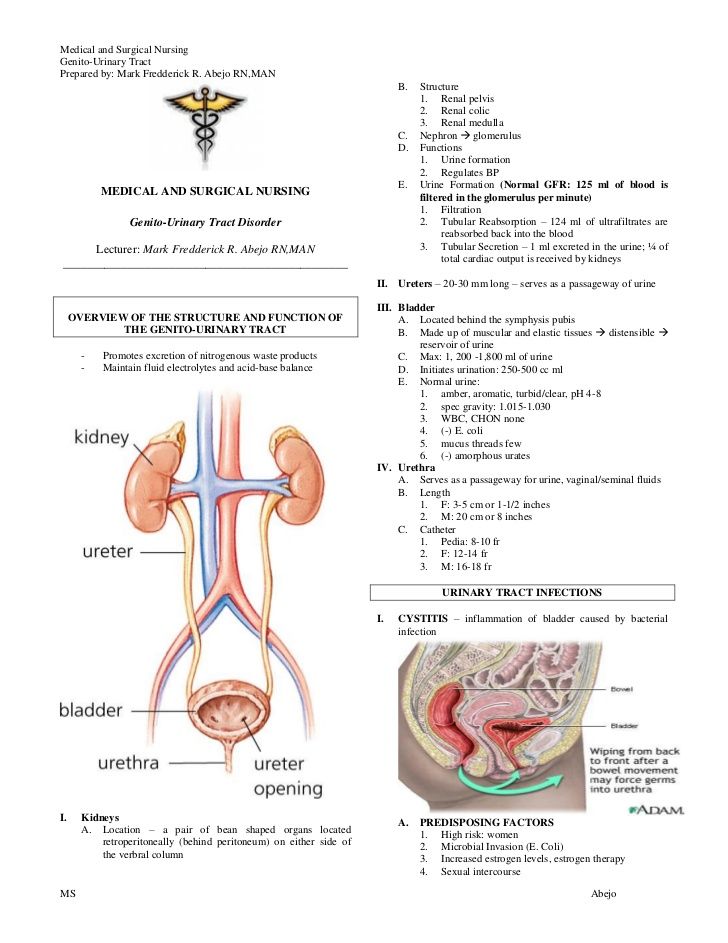
Why is antibiotic resistance a particular concern for UTIs? Several factors contribute:
- Overuse of antibiotics in healthcare and agriculture
- Inappropriate antibiotic prescribing for viral infections
- Patients not completing full courses of prescribed antibiotics
To combat antibiotic resistance, healthcare providers are adopting strategies such as:
- Antibiotic stewardship programs
- Tailoring antibiotic choices based on local resistance patterns
- Exploring alternative treatments for uncomplicated UTIs
The Role of Urine Culture in Antibiotic Selection
Urine cultures play a crucial role in selecting the most effective antibiotic for UTI treatment. This test:
- Identifies the specific bacteria causing the infection
- Determines which antibiotics the bacteria are sensitive to
- Helps prevent the use of ineffective antibiotics
By using targeted antibiotics, healthcare providers can improve treatment outcomes and reduce the risk of contributing to antibiotic resistance.
Emerging Research and Future Directions in Male UTI Management
The field of urology is continuously evolving, with new research shedding light on male UTIs and potential treatment innovations. Some areas of current interest include:

- Probiotics for UTI prevention
- Vaccines targeting common uropathogens
- Novel antibiotic alternatives
- Improved diagnostic techniques for faster, more accurate UTI detection
How might these advancements change UTI management in the future? While it’s too early to say definitively, these areas of research hold promise for:
- More effective prevention strategies
- Reduced reliance on traditional antibiotics
- Personalized treatment approaches based on individual patient factors
As research progresses, men with UTIs may benefit from more targeted, effective treatments with fewer side effects and a lower risk of contributing to antibiotic resistance.
The Psychological Impact of UTIs on Men
While the physical symptoms of UTIs are well-documented, the psychological impact on men is often overlooked. UTIs can affect various aspects of a man’s life, including:
- Self-esteem and body image
- Sexual relationships and intimacy
- Work productivity and social interactions
- Overall quality of life
How can men cope with the psychological effects of UTIs? Several strategies can help:

- Open communication with healthcare providers about concerns
- Seeking support from partners, family, or support groups
- Practicing stress-reduction techniques
- Focusing on overall health and well-being
Healthcare providers should be aware of these potential psychological impacts and address them as part of comprehensive UTI care.
Breaking the Stigma: Men’s Urinary Health Discussions
There’s often a stigma surrounding men’s urinary health issues, which can lead to delayed diagnosis and treatment. Encouraging open discussions about UTIs and other urinary concerns is crucial for promoting men’s health. This can involve:
- Public health campaigns targeting men’s urinary health
- Education initiatives in healthcare settings
- Normalizing conversations about urinary symptoms among men
By breaking down these barriers, men may feel more comfortable seeking timely medical attention for urinary symptoms, potentially reducing the risk of complications from untreated UTIs.
Urinary Tract Infection in Men
What Is It?
Urinary tract infections involve the parts of the body — the kidneys, ureters, bladder and urethra — that produce urine and carry it out of the body. Urinary tract infections often are classified into two types based on their location in the urinary tract:
- Lower tract infections — These include cystitis (bladder infection) and urethritis (infection of the urethra). Lower urinary tract infections commonly are caused by intestinal bacteria, which enter and contaminate the urinary tract from below, usually by spreading from the skin to the urethra and then to the bladder. Urethritis also may be caused by microorganisms that are transmitted through sexual contact, including gonorrhea and Chlamydia. Another form of male urinary infection is prostatitis which is an inflammation of the prostate.
- Upper tract infections — These involve the ureters and kidneys and include pyelonephritis (kidney infection).
 Upper tract infections often occur because bacteria have traveled upward in the urinary tract from the bladder to the kidney or because bacteria carried in the bloodstream have collected in the kidney.
Upper tract infections often occur because bacteria have traveled upward in the urinary tract from the bladder to the kidney or because bacteria carried in the bloodstream have collected in the kidney.
|
|
Most cases of urinary tract infections occur in women. Of those that occur in men, relatively few affect younger men. In men older than 50, the prostate gland (a gland near the bottom of the bladder, close to the urethra) can enlarge and block the flow of urine from the bladder. This condition is known as benign prostatic hyperplasia or BPH. This condition can prevent the bladder from emptying completely, which increases the likelihood that bacteria will grow and trigger an infection. Cystitis is more common in men who practice anal intercourse and in those who are not circumcised. Other factors that increase the risk of urinary infections include an obstruction, such as that caused by a partial blockage of the urethra known as a stricture, and non-natural substances, such as rubber catheter tubes (as may be inserted to relieve a blockage in the urethra).
Symptoms
A urinary tract infection usually causes one or more of the following symptoms:
- Unusually frequent urination
- An intense urge to urinate
- Pain, discomfort or a burning sensation during urination
- Awakening from sleep to pass urine
- Pain, pressure or tenderness in the area of the bladder (in the middle of the lower abdomen, below the navel)
- Bedwetting in a person who usually had been dry at night
- Urine that looks cloudy or smells foul
- Fever, with or without chills
- Nausea and vomiting
- Pain in the side or upper back
Diagnosis
Your doctor will ask about your symptoms and about any previous episodes of urinary tract infection. To fully assess your risk factors, your doctor may ask about your sexual history, including your history and your partner’s history of sexually transmitted diseases, condom use, multiple partners and anal intercourse.
Your doctor will diagnose a urinary tract infection based on your symptoms and the results of a physical examination and laboratory tests of your urine. In a typical urinary tract infection, your doctor will see both white blood cells (infection-fighting cells) and bacteria when he or she examines your urine under a microscope. Your doctor probably will send your urine to a laboratory to identify the specific type of bacteria and specific antibiotics that can be used to eliminate the bacteria.
In men, a rectal examination will allow your doctor to assess the size and shape of the prostate gland. If you are a young man with no sign of an enlarged prostate, your doctor may order additional tests to search for a urinary tract abnormality that increases the likelihood of infection. This is because urinary tract infections are relatively rare in young men with normal urinary tracts. Additional tests may include intravenous pyelography or a computed tomography (CT) scan, which shows an outline of your urinary tract on X-rays; ultrasound; or cystoscopy, an examination that allows your doctor to inspect the inside of your bladder using a thin, hollow tube-like instrument.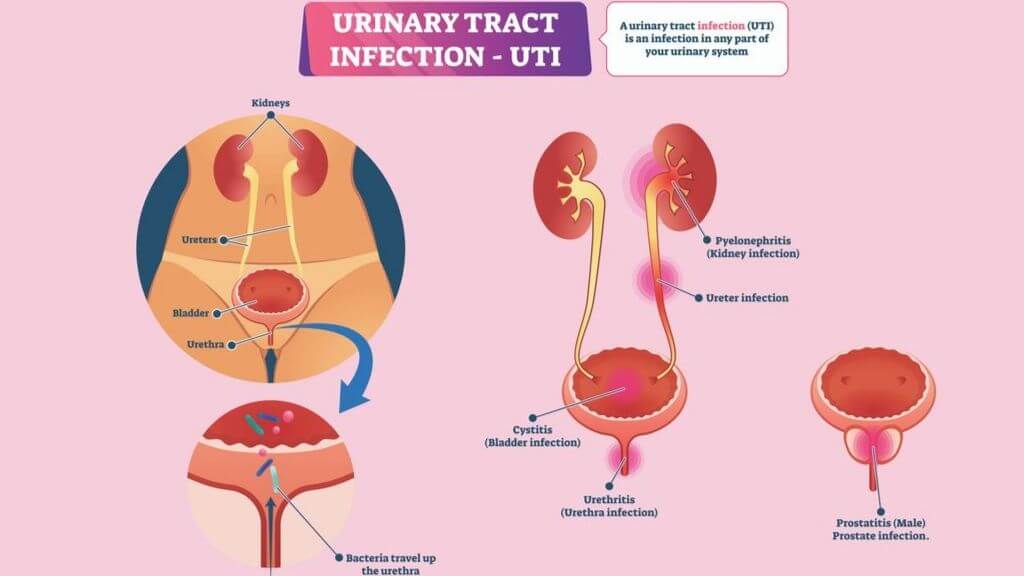
Expected Duration
With proper treatment, most uncomplicated urinary tract infections begin to improve in one to two days.
Prevention
Most urinary tract infections in men cannot be prevented. Practicing safe sex by using condoms will help to prevent infections that are transmitted through sexual contact.
In men with benign prostatic hypertrophy, cutting out caffeine and alcohol or taking certain prescription medications may help to improve urine flow and prevent the buildup of urine in the bladder, which increases the likelihood of infection. Many men with urinary infections due to an enlarged prostate gland require surgery to remove part of the gland. Because this surgery can improve urine flow, it can help prevent infections.
Treatment
Doctors treat urinary tract infections with a variety of antibiotics. The results of laboratory tests on your urine can help your doctor pick the best antibiotic for your infection. In general, most uncomplicated lower tract infections will be eliminated completely by five to seven days of treatment. Once you finish taking the antibiotics, your doctor may ask for a repeat urine sample to check that bacteria are gone. If an upper tract infection or infection of the prostate is diagnosed, your doctor may prescribe antibiotics for three weeks or longer.
Once you finish taking the antibiotics, your doctor may ask for a repeat urine sample to check that bacteria are gone. If an upper tract infection or infection of the prostate is diagnosed, your doctor may prescribe antibiotics for three weeks or longer.
Men with severe upper tract infections may require hospital treatment and antibiotics given through an intravenous catheter (in a vein). This is especially true when nausea, vomiting and fever increase the risk of dehydration and prevent the use of oral antibiotics.
When To Call a Professional
Call your doctor whenever you have any of the symptoms of a urinary tract infection.
If you are approaching age 50, call your doctor if you notice any of the following: a decrease in the force of your urine stream, difficulty in beginning urination, dribbling after you urinate, or a feeling that your bladder isn’t totally empty after you finish urinating. These could be symptoms of an enlarged prostate, a problem that can be treated effectively before it triggers a urinary tract infection.
Prognosis
Most urinary tract infections can be treated easily with antibiotics. In a man who has a urinary tract abnormality or an enlarged prostate, repeated urinary tract infections may occur as long as the underlying problem continues to interfere with the free flow of urine.
Additional Info
National Institute of Diabetes & Digestive & Kidney Disorders
https://www.niddk.nih.gov/
Urology Care Foundation
https://www.urologyhealth.org/
How does a man get a UTI?
June 22, 2021
All Posts
Urinary tract infections (UTIs) are one of the most common reasons for patients to see their providers. UTIs are the cause of more than 8.1 million visits to health care providers each year. Twelve percent of men will have at least one UTI during their lifetime. Men over the age of 50 are at higher risk of a UTI.
UTIs are the cause of more than 8.1 million visits to health care providers each year. Twelve percent of men will have at least one UTI during their lifetime. Men over the age of 50 are at higher risk of a UTI.
UTIs are about four times more common in women than men, however, when men get a UTI, it is more likely to spread to the kidneys and upper urinary tract. Some cases may even require surgery, so it is important to know the symptoms.
What is a UTI?
Normal urine is sterile and contains no bacteria. However, bacteria may get into the urine and travel from the urethra into the bladder causing a UTI. Bacteria can grow in damp, dark, moist areas. Bacteria live on the skin and the rectal area. It can access the body through the urethra or through small tears in the skin.
UTI Symptoms in Men:
UTIs can cause the lining of the bladder and urethra to become red, irritated and inflamed which causes symptoms. If the bacteria progresses up the urinary tract into the kidneys, it is then classified as a kidney infection (pyelonephritis). Symptoms of a kidney infection are similar to a UTI, but often include back pain, fever, nausea or vomiting and blood in the urine. Kidney infections are a more serious condition and should be treated quickly.
Symptoms of a kidney infection are similar to a UTI, but often include back pain, fever, nausea or vomiting and blood in the urine. Kidney infections are a more serious condition and should be treated quickly.
The three most common symptoms for men when experiencing a UTI:
1. Painful or difficult urination
2. Frequent urge to urinate
3. An urgent need to urinate
Other symptoms might include: cloudy urine, urinary incontinence, bladder pressure or discomfort, lower back pain, blood in the urine, malodorous urine, fever, nausea or vomiting, or changes in mental status (confusion).
A history, exam and testing can help pinpoint treatment often with a short course of antibiotics. Additionally, the underlying cause for a UTI will be assessed and discussed to reduce the risk of a UTI in the future.
UTI prevention in both men and women includes drinking about two liters of water a day, emptying your bladder when needed and not holding your urine for an extended period of time and addressing any changes in urination that have progressed over time.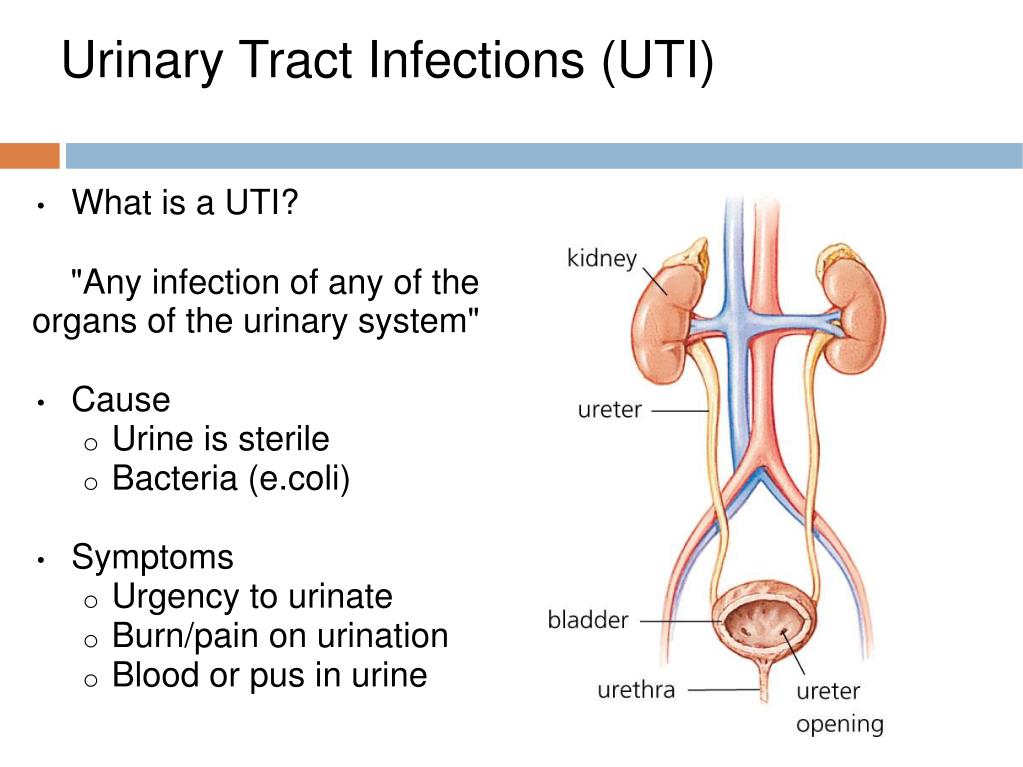
Urologists are trained to evaluate the cause and treat UTIs in both men and women. Contact Austin Urology Institute at 512.694.8888 and schedule a consultation with a provider if you have concerns about UTIs or other urinary issues.
Virtual Visits Available
We offer both in-clinic and remote telemedicine consultations worldwide.
Book Now
This website uses cookies to ensure you get the best experience on our website. Cookies Policy.
Got it!
Urethritis in men – symptoms and treatment – Mediunion blog
According to WHO, the disease is one of the most common urological diseases. Urethritis is not a rare phenomenon among men of different ages.
Why do men get urethritis?
The main cause of the disease is exposure to pathogenic microbes and infections. These experts include:
- Gonorrheal – the pathogen enters the body after unprotected intercourse.
- Bacterial – they get during operations on the bladder, for example, the introduction of a catheter.

- Candida is an infection caused by a fungus. Occurs as a result of endocrine disorders or unprotected intercourse.
- Viral – chlamydia enters exclusively through sexual contact.
- Trichomonas – parasites that cause infection, also transmitted sexually.
What are the symptoms of urethritis in men?
In most cases, the disease does not have pronounced symptoms, or they are not shown at all.
The incubation period for bacterial urethritis is one to two weeks. However, the first pronounced symptoms of the disease may appear after a few months from the moment of infection.
Main symptoms of urethritis in men:
- Itching sensation in the genital area
- The appearance of discharge – mainly in the morning, they are accompanied by an unpleasant odor. Mucus is white or gray in color, dries to a yellowish tint
- Hyperemia – appears near the opening of the urethra and outside
- Pain and burning in the urethra.
 There is a symptom during the emptying of the bladder
There is a symptom during the emptying of the bladder - Swelling in the penis – sensation of pain when touched and during intercourse
- Adhesion of the urethra
- Presence of bloody and purulent discharge in urine and semen
- Pain during erection
- Increased body temperature
- Inflammation of the prostate gland
When the first symptoms of the disease appear, it is necessary to consult a specialist. The doctor will conduct a survey, examination and diagnosis. After that, a treatment strategy will be assigned. It is better not to delay with a trip to a specialist. Then the disease can provoke the appearance of serious complications.
How is urethritis treated in men?
Timely and competent therapy helps to avoid possible complications. In most cases, the treatment is medical. Doctors prescribe the following drugs – antibiotics, antioxidants, antiseptics, vitamins, immunomodulators and topical agents.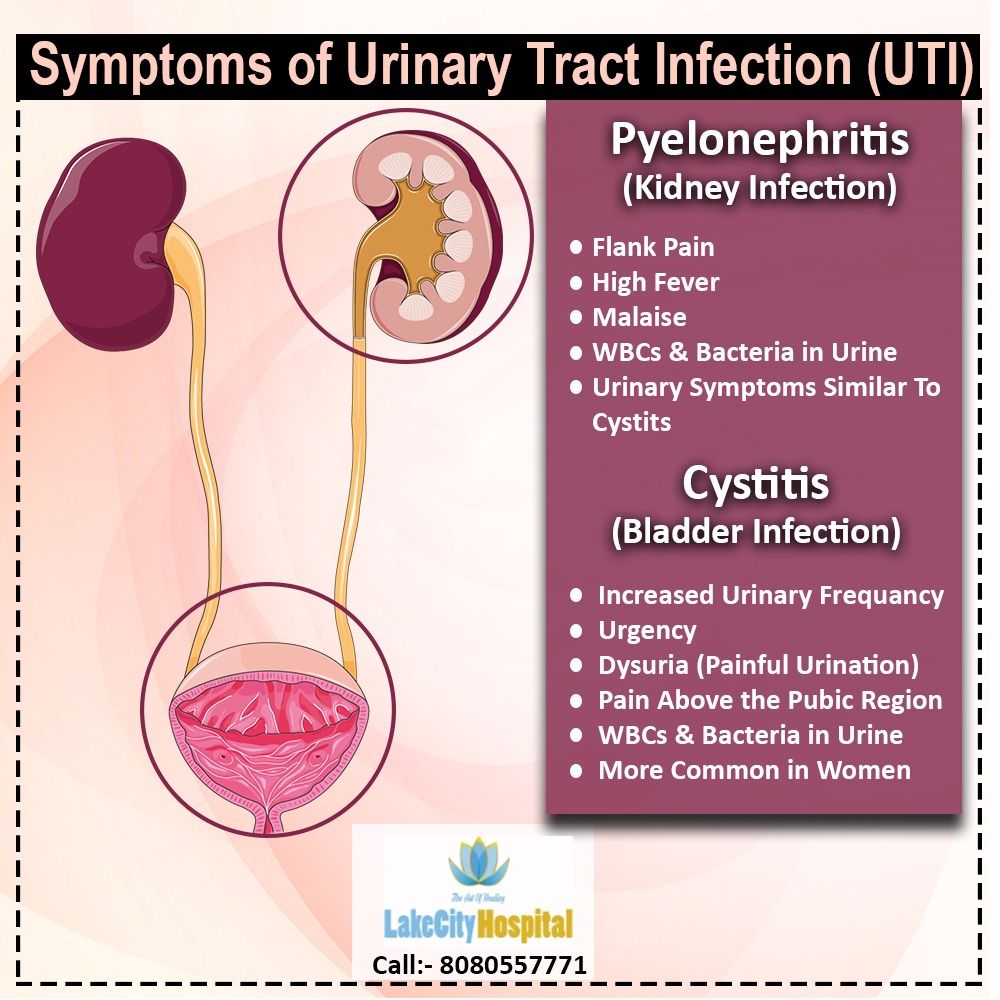 The dosage is prescribed by the doctor. It is also important to observe proper nutrition, stop drinking alcohol and smoking.
The dosage is prescribed by the doctor. It is also important to observe proper nutrition, stop drinking alcohol and smoking.
Antibacterial drugs are the basis of treatment for urethritis of any origin. The spectrum of antibiotics used in the treatment of this disease is quite wide. Preparations from the group of cephalosporins, tetracyclines, macrolides, fluoroquinolones are used, less often penicillin preparations are used.
Hardcore difficulty level. Tips for surviving in a “women’s” office / Habr
I was inspired to write this material by the numerous mentions of how hard it is sometimes for a woman to get along in a male team, to be alone in an office full of men and what pitfalls there are in all this . But I have never seen a story about what happens to a man who, by the will of fate, finds himself is not at the machine, but is in the same office with a certain number of young and not very female non-techies. Believe here, too, not everything is so simple for linear male thinking. Once I got into a similar situation and I will tell you that this is, in fact, an invaluable experience, but in some places very painful.
Once I got into a similar situation and I will tell you that this is, in fact, an invaluable experience, but in some places very painful.
But first things first, under the cut.
I will not breed male chauvinism in the article , but simply list a number of situations, real and simulated, in which it is better to pretend to be a rag and not move , or vice versa, throw yourself at the embrasure with your chest. The article was written on the basis of personal experience of working in several small organizations, in one of which, as a support, I did not have enough desk in the overgrown developer’s office and I ended up with my female colleague in the office of other young ladies and, in fact, ended up “alone in field”.
Start
First of all, having got into the already formed women’s team, i.e. a separate cabinet should be learned that everything that you ever say can be used against you in the future . It is highly desirable to be as polite, friendly and laconic as possible. A neat appearance plays a huge role, even if mirrors crack from your appearance. Pay special attention to shoes, if a man does not pay attention to your trampled sneakers, then a woman neighbor can make an absolutely incredible conclusion from your point of view. Most likely, they will not speak to you for several days, or only at work, this is normal. Be silent, listen and do the work. This is the quietest time. At the same time, do not go too far with silence, answer calmly and affably, otherwise there is a risk of being branded as an unpleasant goon, or even “dumb”.
A neat appearance plays a huge role, even if mirrors crack from your appearance. Pay special attention to shoes, if a man does not pay attention to your trampled sneakers, then a woman neighbor can make an absolutely incredible conclusion from your point of view. Most likely, they will not speak to you for several days, or only at work, this is normal. Be silent, listen and do the work. This is the quietest time. At the same time, do not go too far with silence, answer calmly and affably, otherwise there is a risk of being branded as an unpleasant goon, or even “dumb”.
After that, a more active acquaintance with you and questions begin.
One way or another, you will start a conversation, most likely in the office itself, and they will start asking you about personal things. Who you are, where you worked, what you breathe and so on. I highly, just highly strongly recommend not to brag about anything and stick to a neutral position, since an opinion about you can be formed at the same minute, and your merits (according to your own assessment) are regarded as shortcomings.
Pay attention to the fact that even if you are talking to only one girl per office, and everyone else is looking at the monitors and working enthusiastically, do not be mistaken, you are not giving an answer to a specific person, but to everyone at once, even if they in no way show their participation in the conversation, with a probability of 90% you are listening to . This is generally an amazing ability to listen, speak and do something at the same time, inaccessible to me, as inaccessible to my understanding.
Disputes, communication and discussions
Almost all men like to argue about something in the smoking room, or during lunch, discuss, share opinions. This is actually normal communication. Just don’t forget that now we are dealing with more sensitive personalities organizing a certain “collective intelligence” .
The most important thing is not to destroy the interlocutor in the discussion.
There are topics in which you are better than others. Most often, when explaining his wrong to a male colleague, he learns new information and rethinks it. A woman, especially your colleague, and especially on work issues, may perceive your flow of information as a personal insult, especially if you do this in front of roommates. And there is no worse enemy than an offended woman , so never try to act condescendingly, or in a lecturer’s way to suppress a person with your knowledge, this will end badly for you . The best option is to help when asked, and not to intervene yourself, but to offer your opinion / point of view / help on work issues is to step on very thin ice. Young ladies who are not used to working and communicating with men may react the way they are used to and this is very different from what you expect to see. For the worse.
Most often, when explaining his wrong to a male colleague, he learns new information and rethinks it. A woman, especially your colleague, and especially on work issues, may perceive your flow of information as a personal insult, especially if you do this in front of roommates. And there is no worse enemy than an offended woman , so never try to act condescendingly, or in a lecturer’s way to suppress a person with your knowledge, this will end badly for you . The best option is to help when asked, and not to intervene yourself, but to offer your opinion / point of view / help on work issues is to step on very thin ice. Young ladies who are not used to working and communicating with men may react the way they are used to and this is very different from what you expect to see. For the worse.
Q&A
Be mentally prepared for the fact that many women very often do not answer to a specific question . Those. you can come up and ask, conditionally, what color are ripe bananas. You will be asked why you need bananas, are you sure that they are bananas, and how many pieces/kilo do you need? Then you will get the answer that the color changes depending on the variety of banana, and in general, you work directly with oranges and look towards the orange color. And you can read about bananas somewhere else. Maybe I’m just a loser, but I’ve had moments like this all the time. Even a colleague who is most loyal to you will often not be able to give a specific answer to a specific question posed to her, and one way or another, she will divert the topic. I’m talking about situations where you’re new and haven’t worked with her for years, don’t forget that.
You will be asked why you need bananas, are you sure that they are bananas, and how many pieces/kilo do you need? Then you will get the answer that the color changes depending on the variety of banana, and in general, you work directly with oranges and look towards the orange color. And you can read about bananas somewhere else. Maybe I’m just a loser, but I’ve had moments like this all the time. Even a colleague who is most loyal to you will often not be able to give a specific answer to a specific question posed to her, and one way or another, she will divert the topic. I’m talking about situations where you’re new and haven’t worked with her for years, don’t forget that.
Personal dislike
This is the strangest thing in the behavior of many, especially young and ambitious girls. I saw a young employee of the personnel department, who talked very tensely about work with one of the guys only because he was not handsome in her opinion , which was loudly voiced after the door was closed behind him.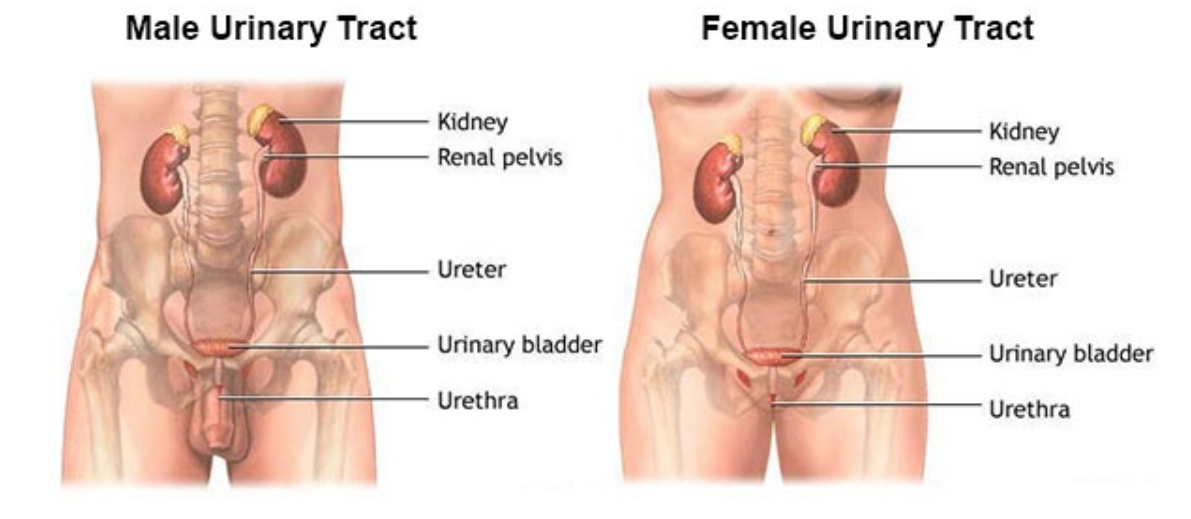 Those. The external biological factor of a person added problems to his work and it was clear that he was treated with contempt and indulgence, which, I tell you, is very unpleasant. In general, very often in the women’s team there are “personal” hostility. A girl may be annoyed by the tone of your voice, the way you speak, dress, the mode of brewing coffee, or the fact that you swing in a chair. Any thing can lead to discord in the relationship with a colleague and subsequent problems. Unfortunately, I was never able to figure out how to avoid this and cute behavior will not save you here. Be prepared for the fact that you didn’t do anything wrong at all, but you don’t like it, this is normal and cannot be changed with a probability of 90%.
Those. The external biological factor of a person added problems to his work and it was clear that he was treated with contempt and indulgence, which, I tell you, is very unpleasant. In general, very often in the women’s team there are “personal” hostility. A girl may be annoyed by the tone of your voice, the way you speak, dress, the mode of brewing coffee, or the fact that you swing in a chair. Any thing can lead to discord in the relationship with a colleague and subsequent problems. Unfortunately, I was never able to figure out how to avoid this and cute behavior will not save you here. Be prepared for the fact that you didn’t do anything wrong at all, but you don’t like it, this is normal and cannot be changed with a probability of 90%.
General conversations
Quite often, in men’s groups, the dialogues of two develop into a collective discussion of some issue, not even related to work. In the women’s team, everything is different. You can work with them long enough, however, your joining the conversation may be perceived as an intrusion into the dialogue , even if you have something to say, something useful / funny, and your chances of running into the phrase “I’m not talking to you” in various variations and intonations increase dramatically. If possible, avoid collective conversations, in which the employee , who is loyal to you, is not the initiator, otherwise your “karma” inside the office will drop a few more points and sooner or later will break through the floor.
If possible, avoid collective conversations, in which the employee , who is loyal to you, is not the initiator, otherwise your “karma” inside the office will drop a few more points and sooner or later will break through the floor.
Relationship restoration
Having once transferred a female colleague to the category “mortal enemy” you won’t be able to get her out of there. By the way, you may not even remember what happened that they began to dislike you, but keep in mind that she remembers everything. Thus, all you have to do is remain neutral and try to abstract yourself from personal conflict, because any attempt to resolve it will not have the desired and expected effect, and any of your words will be initially regarded as an act of aggression, and any of your oversights will be very carefully monitored, as well as your job is to look for vulnerabilities if the young lady turned out to be vindictive in addition. In this case, you have to either work perfectly, or look for a new job, or hope that life will separate you into different rooms / departments and you will no longer intersect.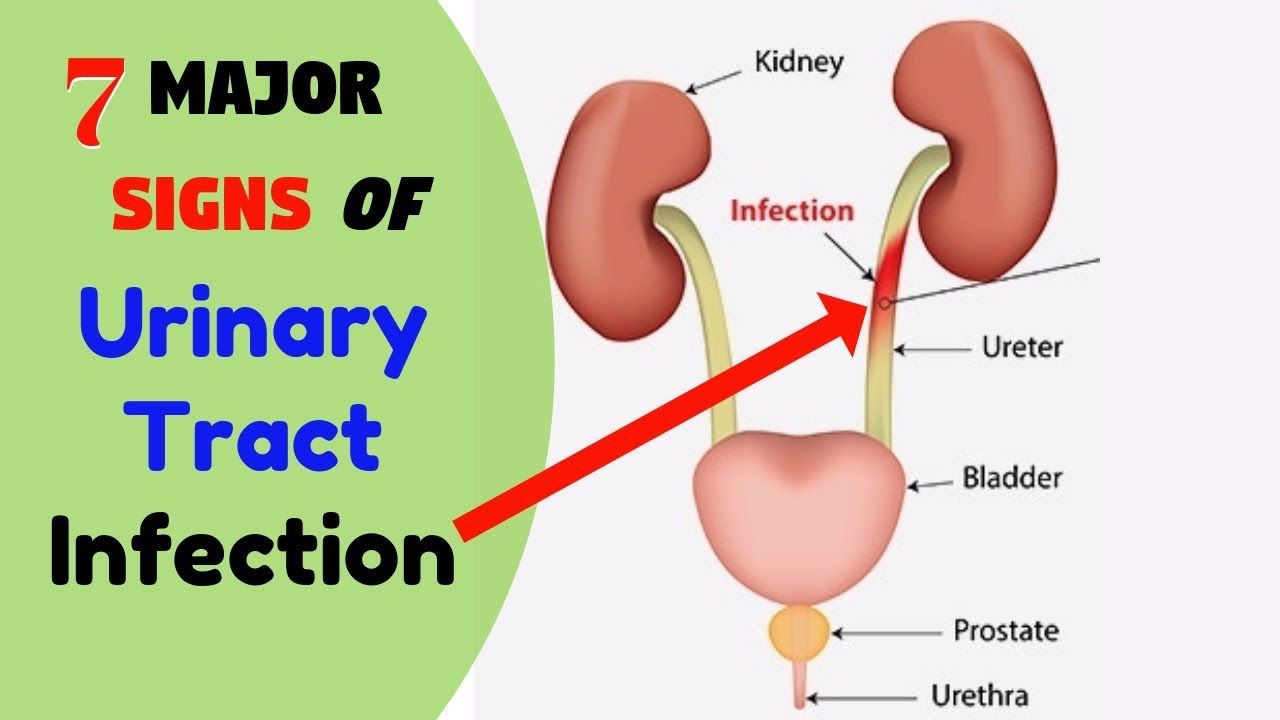 Do not let yourself be fooled by polite communication, or even jokes from outside “enemy” , as if everything is back to normal, as soon as you have a weak spot, they will put pressure on it very quickly, perhaps just for fun. Some sexism can be read here, but I have not noticed such behavior in men.
Do not let yourself be fooled by polite communication, or even jokes from outside “enemy” , as if everything is back to normal, as soon as you have a weak spot, they will put pressure on it very quickly, perhaps just for fun. Some sexism can be read here, but I have not noticed such behavior in men.
“Safe Groups”
From my own practice of several teams with a sufficient number of women for myself, I singled out the following, the least “dangerous” and non-conflict categories of colleagues:
- Young mothers under 30, most often calm and friendly
- “Tomboys” preferring communication with men more than with women
- Less successful women 35-45 with family and children
Accountants should not be included in these groups, they have their own spherical situations in a vacuum and I’m afraid to even get into it, they are very nervous.
In general, I highly recommend singling out “single” colleagues immediately, but not in order to hit, I am in order to understand that these people are the most susceptible and often suspicious, especially at the age of about 30. According to a personal statistical sample, married girls and women are more calm, stable in emotions and loyal to men as such, perhaps due to the fact that they constantly communicate with their own husbands and have learned to interact with a representative of “our species”. Also remember if there are brothers / sisters. The only daughter in the family, at times, grows up to be an extremely selfish person who trails behind her in everything.
According to a personal statistical sample, married girls and women are more calm, stable in emotions and loyal to men as such, perhaps due to the fact that they constantly communicate with their own husbands and have learned to interact with a representative of “our species”. Also remember if there are brothers / sisters. The only daughter in the family, at times, grows up to be an extremely selfish person who trails behind her in everything.
And, of course, education plays a huge role. Never clashed with girls with a technical / mathematical education, perhaps because of their student experience and life in a “male” team before that.
Total
Perhaps the material turned out to be too in the style of the “captain”, but 85% of the men I know have never been in such situations, and the remaining 15% do not like to spread.
First of all, you go to work to earn money, and then everything else. But remember, carelessness in words, looks and gestures with women can seriously poison this part of your life up to the search for change.

 Upper tract infections often occur because bacteria have traveled upward in the urinary tract from the bladder to the kidney or because bacteria carried in the bloodstream have collected in the kidney.
Upper tract infections often occur because bacteria have traveled upward in the urinary tract from the bladder to the kidney or because bacteria carried in the bloodstream have collected in the kidney.
 There is a symptom during the emptying of the bladder
There is a symptom during the emptying of the bladder